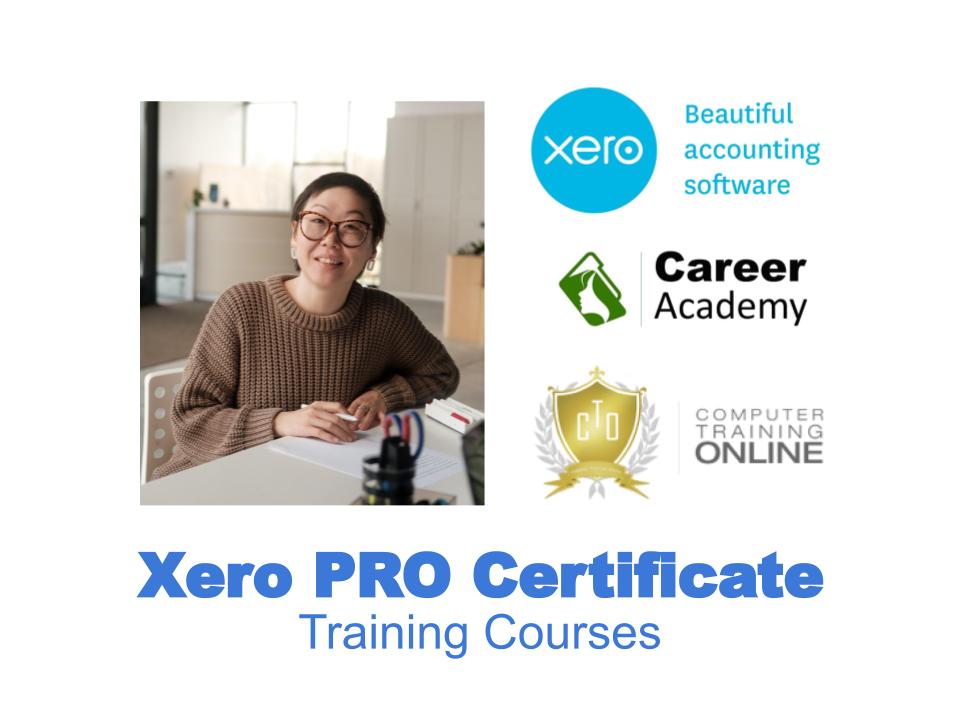Description
Advertising of BAS services is legislated by the TAX AGENT SERVICES ACT 2009 so before you engage the services of any person in our directory please be certain to ask for their BAS agent number. For more information click here
1 Xero Online Daily Transactions Training Course
This course is ideal for any organisation or business, small or large, which sells products and services. This might include tradespeople (electricians, mechanics, plumbers, carpenters, painters, bakers and chefs, hairdressers, occupational therapists — the list goes on). QuickBooks is often preferred by bookkeepers and accountants employed to work with numerous small businesses.
In terms of our Online Daily Transaction Course, you will start the process by performing a simple purchase and payment for office cleaning services. From there you’ll delve into purchases of inventory items. Before purchasing inventory items, you will need to create them and enter the information that will later be used, not only buy them wholesale, but also to sell them to your customers.
Course Duration: 10 hours
Topics included:
Customer and Supplier Cards
After creating our inventory items, we create suppliers and then purchases of our inventory items. At this stage you can allocate default settings for each card, like:
- Expense Account
- Purchase Memo and Comments
- Supplier Terms and more…
Purchases
The wholesale supplier provides us with ex-GST prices in their price list so we ensure that Xero is setup for us to enter these purchases using the ex-GST price. Xero also enables us to keep track of the entire purchase process of:
- Quoting
- Ordering Items
- Received Items
After the Purchase Order is placed we look at the data entry process of receiving items when they physically arrive in our warehouse, linking this arrival of stock to the Trade Creditors account. Remember that it’s not until we physically receive goods that we owe the money for them.
It’s quite normal in real life that not all inventory items arrive at the same time. Therefore we take you through the scenario of receiving some items and having the remainder placed on back order, and explore the purchase register for evidence of purchases with different statuses like:
- Open
- Order
- Closed
Once you have supplier invoices you have accounts payable and we explore how to pay for these invoices. We explore full and part payments as well as accounts payable reports, vendor payment terms, and ageing periods.
Sales
The first part of the sales process is to offer your products and services for sale. Where a full solution of products and services is required, the first step is usually to provide the prospective customer with a quotation — something which Xero enables you to do. What’s fabulous about this feature in Xero is that you then only need to enter the quotation once and send it to your prospect. When the order is placed the quote can very quickly be converted to an invoice. Our online course will take you through all of these steps in a practical exercise.
This process of being able to quote up front makes things much faster and easier than, say, providing a quote in Word or Excel and then having to re-enter all the data into Xero for invoicing.
When a company sells its products and services the important process of debt collection begins — almost immediately. Every invoice goes out with the selling terms indicated and can include:
- Prepaid
- COD
- Nett 7 days
- 7 Days after end of month (EOM) etc.
Credit Management
Creating and Applying Credits
In the event that fewer products were supplied, or the installation took half the time expected, you may want to credit your customer. The course shows you how to create a credit and apply it to the invoice where it should be applied, to or a new invoice.
Receiving Payments and Banking
Payments can be received in one large transaction or bit by bit and Xero helps you keep track of every single payment. The course takes you through several different scenarios.
We introduce the concept of different asset accounts apart from just your bank account. If you want to get into the nitty gritty of bookkeeping you need to create an asset account for every step of the movement of cash. These asset accounts include:
- Accounts Receivable (money owed to you)
- Undeposited Funds (money you have that is yet to be banked)
- Bank Account (cash you have)
We cover the process of receiving payments into the Undeposited Funds account and then move these funds into the bank account on the day they are deposited. This step appears onerous at first glance, but we include it because it helps reduce a lot of time in the bank reconciliation process where all you see is deposits into your bank account.
This concept is also used when you use payment services like PayPal and Direct Debit.
Cash-Based and Accrual Accounting
The Xero Online Daily Transaction Course is designed to give you skills relating to cash-based accounting as well as accrual accounting. The difference is that cash-based accounting relates only to money you have in your bank account and money you have spent. Accrual accounting is based on money that is owed to you, and that you owe, even though it may not be in the company bank account at the time of reporting.
Business Financial Reporting
Although we don’t go into reporting in great detail in this course, it is an important time to consider how you want your reports to be generated and what you want them to show. We include services on the invoice and enter them as stock items in the Quickbooks inventory and sales reporting to get some excellent information about the performance of the business.
 SPECIAL OFFER*
SPECIAL OFFER*
When you enrol into the Xero Beginners Training Course and successfully complete the course and achieve your certificate you’ll be eligible to join our bookkeeper talent pool for FREE and get national exposure to work remotely from home.
* Offer is available for a limited time and may end at any time



 The Certificate in Xero Beginners Training Course will introduce you to the hundreds of Integrations that connect with Xero and make it even more powerful to manage the operations of most different business types and industries. Understand why Xero is so powerful and how it can improve other parts of the businesses where you work.
The Certificate in Xero Beginners Training Course will introduce you to the hundreds of Integrations that connect with Xero and make it even more powerful to manage the operations of most different business types and industries. Understand why Xero is so powerful and how it can improve other parts of the businesses where you work.  If you want to learn more than just the Xero Beginners Certificate and even enrol into a package where you learn other programs like MYOB please inquire using the form below as we have:
If you want to learn more than just the Xero Beginners Certificate and even enrol into a package where you learn other programs like MYOB please inquire using the form below as we have:
















